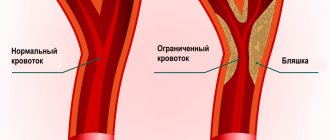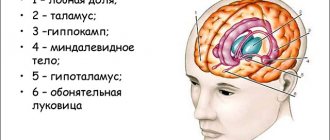Content:
- 1 Membrane potential
- 2 Impulse
- 3 Synaptic transmission
- 4 Typical neural pathway
Description
Much of neuroscience
comprise sections on how individual neurons work and how information is passed from cell to cell through synapses. It should be obvious that without this information we would be in the position of someone who wants to understand the operation of a radio or television, but knows nothing about resistors, capacitors and transistors. Over the past decades, thanks to the ingenuity of a number of neurophysiologists, the most famous of whom are Andrew Huxley, Alan Hodgkin, Bernard Katz, John Eccles and Stephen Kuffler, the physicochemical mechanisms of nerve impulses and synaptic transmission have been well studied. However, it is equally obvious that information of this kind in itself cannot yet lead to an understanding of the functioning of the brain, just as knowledge about resistors, capacitors and transistors alone will not allow one to understand the operation of a radio or television, and knowledge of the chemistry of ink will not allow one to read a Shakespeare play.
I begin this article by summarizing some of what we know about nerve conduction and synaptic transmission.
Knowledge of the fundamentals of physical chemistry and electricity will be a great help in a correct understanding of the essence of the matter, but I think that even without this the reader will be able to get a sufficient understanding of the subject. In any case, you will need only a rudimentary understanding of these issues to follow the discussion in subsequent chapters.
The task of the nerve cell
is to receive information from the cells that transmit it, summarize, or integrate, this information and deliver the integrated information to other cells. Information is usually transmitted in the form of short-term processes called nerve impulses. In any cell, each impulse is exactly the same as any other, that is, an impulse is a stereotypical process. At any moment, the frequency of impulses sent by a neuron is determined by the signals it has just received from transmitting cells and transmits information to the cells for which this neuron is transmitting. The frequency of the pulses varies from one every few seconds or even lower to a maximum of about a thousand per second.
↑ Membrane potential
What happens when information is transferred from one cell to another through a synapse?
In the first - presynaptic - cell near the base of the axon, an electrical signal, or impulse, appears. The impulse moves along the axon to its endings. From each ending, as a result of this impulse, a chemical substance is released into the narrow (0.02 μm) fluid-filled gap separating one cell from another - the synaptic cleft - which diffuses to the second - postsynaptic - cell. It affects the membrane of this second cell in such a way that the probability of impulses occurring in it either decreases or increases. After this brief description, let's go back and look at the whole process in detail.
Rice.
8. Diagram of the arrangement of nerve cells on a transverse section of the retina, drawn by Santiago Ramon y Cajal, the greatest neuroanatomist of all time. From the top layer, where the thinner rods and thicker cones are shown, to the bottom layer, where the optic nerve fibers exit to the right, the retina is a quarter of a millimeter thick.
The nerve cell is washed with a saline solution and contains it inside. The salts include not only sodium chloride, but also potassium chloride, calcium chloride and a number of other, less common salts. Since most salt molecules are dissociated, fluids both inside and outside the cell contain chlorine, potassium, sodium, and calcium ions (Cl-, K+, Na+, and Ca2+).
At rest, the electrical potentials inside and outside the cell differ by about one tenth of a volt, with the plus being on the outside. The exact value is closer to 0.07 volts, or 70 millivolts. The signals transmitted by nerves are rapid changes in potential that travel along the fiber from the cell body to the axon terminals. I'll start by describing how a potential difference occurs across the cell membrane.
Rice.
9. In this electron micrograph (a section of the rat cerebellar cortex), the synapse appears as a narrow dark stripe at the bottom of the picture in the middle. To the left of the synapse, you can see a cross-section of an axon filled with tiny round synaptic vesicles that store the neurotransmitter. To the right of the synapse, a dendrite projection (called a spine) is visible; it extends from a large dendritic branch located horizontally at the top of the picture (the two dark sausage-shaped structures in this dendrite are mitochondria). At the synapse, two membranes are brought together - the membranes of the axon and the dendrite; here they are thickened and look more dense. They are separated by a gap 20 nanometers wide.
Nerve cell membrane covering the entire neuron
, - the structure is extremely complex. It is not solid, like a balloon or a hose, but contains millions of “pores” through which substances can pass from one side to the other. Some of them are indeed pores of various sizes; as it has now turned out, they are proteins in the form of tubes that penetrate through the fatty substance of the membrane. In other cases, they are not just pores, but miniature protein machines called pumps; they are able to capture one type of ion and expel them from the cell, while simultaneously capturing other ions inside from the outside. Such pumping requires the expenditure of energy, which the cell ultimately receives in the process of glucose oxidation. There are also pores called canals, which are “valves” that can open and close. What influences lead to their opening or closing depends on the type of pores. Some of them are influenced by membrane potential, others open or close in the presence of certain substances in the internal and external fluid.
The potential difference across the membrane at any moment is determined by the concentration of ions inside and outside, as well as whether the various pores are open or closed. (I said above that potential influences pores, and now I argue that pores influence potential. Let's just say for now that these two things can be interdependent. A more detailed explanation will be given a little later.) Since there are several types of pores and several types of ions, it is easy to understand that the whole system is quite complex. When Hodgkin and Huxley figured it out in 1952, it was a huge achievement. Let us first ask ourselves the question: how is the potential difference created?
Let us assume that at first there is no difference and the concentrations of ions inside and outside are the same. Let us then turn on a pump that removes ions of one type, for example sodium, from the cell, and instead of each removed ion, transfers an ion of another type, for example potassium, inside. The pump itself does not create any potential, since as many positively charged ions are pumped in, the same number are pumped out (sodium and potassium ions carry the same positive charges). But let us now imagine that for some reason a large number of pores of one type have opened, for example potassium pores. Potassium ions will begin to flow through them, and the flow rate through each open pore will depend on the potassium concentration: the more ions near the pore opening, the greater their leakage through the membrane; and since there are more potassium ions inside than outside, there will be more of them coming out than going in. But if more charges come out than come in, the outer space will quickly become electropositive with respect to the inner space. This accumulation of positive charge on the outside will soon begin to counteract the further release of potassium ions from the cell, since like charges repel each other.
Very quickly - before the release of K4 ions leads to a noticeable change in their concentration - the positive charge on the outside will reach a value at which it exactly compensates for the tendency of K+ ions to leave the cell (there are more potassium ions on the inside of the pore, but they are repelled by the outer charge). From this moment on, the movement of charge stops, and we say that the system comes into equilibrium. Thus, the opening of potassium pores leads to the appearance of a potential difference on the membrane with a positive pole on the outside.
But suppose the sodium pores opened instead. By repeating all the reasoning and replacing the words “internal” with “external”, you can easily verify that the result will be exactly the opposite: a negative charge will arise outside. With the simultaneous opening of both types of pores, the result would be a “compromise”. To estimate the magnitude of the membrane potential, we must know the relative concentrations of the two ions and the ratio of the number of open and closed pores for each ion, and then make the appropriate calculations.
Propagation of nerve impulses
As a result of the evolution of the nervous system of humans and other animals, complex information networks arose, the processes of which are based on chemical reactions. The most important element of the nervous system are specialized cells called neurons.
.
Neurons consist of a compact cell body containing a nucleus and other organelles. Several branched processes extend from this body. Most of these projections, called dendrites
, serve as contact points for receiving signals from other neurons.
One process, usually the longest, is called an axon
and transmits signals to other neurons. The end of an axon can branch multiple times, and each of these smaller branches is able to connect to the next neuron.
The outer layer of the axon contains a complex structure formed by many molecules that act as channels through which ions can flow both into and out of the cell. One end of these molecules, deflecting, attaches to the target atom. Energy from other parts of the cell is then used to push that atom out of the cell, while the process in the opposite direction brings another molecule into the cell. The most important is the molecular pump, which removes sodium ions from the cell and introduces potassium ions into it (sodium-potassium pump).
When a cell is at rest and not conducting nerve impulses, the sodium-potassium pump moves potassium ions into the cell and removes sodium ions out (imagine a cell containing fresh water and surrounded by salt water). Because of this imbalance, the potential difference across the axon membrane reaches 70 millivolts (approximately 5% of the voltage of a regular AA battery).
However, when the state of the cell changes and the axon is stimulated by an electrical impulse, the equilibrium on the membrane is disturbed, and the sodium-potassium pump begins to work in the opposite direction for a short time. Positively charged sodium ions enter the axon, and potassium ions are pumped out. For a moment, the internal environment of the axon acquires a positive charge. In this case, the channels of the sodium-potassium pump are deformed, blocking further sodium influx, and potassium ions continue to flow out, and the original potential difference is restored. Meanwhile, sodium ions spread inside the axon, changing the membrane at the bottom of the axon. At the same time, the state of the pumps located below changes, promoting further propagation of the impulse. A sudden change in voltage caused by the rapid movement of sodium and potassium ions is called an action potential
. When an action potential passes through a certain point on the axon, the pumps turn on and restore the resting state.
The action potential travels quite slowly—no more than a fraction of an inch per second. In order to increase the speed of impulse transmission (since, after all, it is not good for a signal sent from the brain to take a minute to reach the hand), the axons are surrounded by a sheath of myelin, which prevents the influx and outflow of potassium and sodium. The myelin sheath is not continuous - at certain intervals there are breaks in it, and the nerve impulse jumps from one “window” to another, due to this the speed of impulse transmission increases.
When the impulse reaches the end of the main part of the axon body, it must be transmitted either to the next underlying neuron or, in the case of neurons in the brain, through numerous branches to many other neurons. For such transmission, a completely different process is used than for transmitting an impulse along the axon. Each neuron is separated from its neighbor by a small gap called a synapse
.
The action potential cannot jump across this gap, so some other way must be found to transmit the impulse to the next neuron. At the end of each process there are tiny sacs called ( presynaptic
)
vesicles
, each of which contains special compounds -
neurotransmitters
. When an action potential occurs, these vesicles release neurotransmitter molecules that cross the synapse and bind to specific molecular receptors on the membrane of underlying neurons. When a neurotransmitter attaches, the balance on the neuron membrane is disrupted. Now we will consider whether a new action potential arises with such an imbalance (neuroscientists continue to search for the answer to this important question to this day).
After neurotransmitters transmit a nerve impulse from one neuron to the next, they can simply diffuse out, undergo chemical breakdown, or return back to their vesicles (this process is awkwardly called reuptake
). At the end of the 20th century, an astonishing scientific discovery was made - it turns out that drugs that affect the release and reuptake of neurotransmitters can radically change a person’s mental state. Prozac* and similar antidepressants block the reuptake of the neurotransmitter serotonin. It appears that Parkinson's disease is associated with a deficiency of the neurotransmitter dopamine in the brain. Researchers studying borderline states in psychiatry are trying to understand how these compounds affect human reasoning.
There is still no answer to the fundamental question of what causes a neuron to initiate an action potential - in the professional language of neurophysiologists, the mechanism of “firing” of a neuron is unclear. Particularly interesting in this regard are neurons in the brain, which can receive neurotransmitters sent by a thousand neighbors. Almost nothing is known about the processing and integration of these impulses, although many research groups are working on this problem. We only know that the neuron carries out the process of integrating incoming impulses and makes a decision whether or not to initiate an action potential and transmit the impulse further. This fundamental process controls the functioning of the entire brain. It is not surprising that this greatest mystery of nature remains, at least today, a mystery for science!
↑ Impulse
When the nerve is at rest, most potassium channels are open and most sodium channels are closed; so there will be a positive charge on the outside. During an impulse, a large number of sodium channels suddenly open in a short segment of the nerve fiber, resulting in a transient predominance of sodium ion flow, and the region quickly becomes electronegative on the outside relative to the inside. Then the sodium pores close again, while the potassium pores remain open, and even in greater numbers than at rest. Both processes - the closing of the sodium pores and the additional opening of the potassium pores - lead to a rapid restoration of the resting potential with a positive pole outside. The entire sequence of events takes about a thousandth of a second.
Rice. 10. Top
: section of the axon at rest.
The sodium pump pumped excess sodium ions outward and the missing potassium ions inward. Sodium channels are mostly closed. Since many potassium channels are open, enough potassium ions have left the cell for the membrane potential to reach the equilibrium level under such conditions - about 70 millivolts plus outside. Bottom
: Nerve impulse moves from left to right. At the far right end, the axon is still in a quiescent state. In the middle section, events associated with the impulse unfold: sodium channels are open, sodium ions move in (although not in such quantities that their concentration changes noticeably after one impulse); membrane potential 40 millivolts with a positive inside At the far left end, the membrane returns to its original state, as additional potassium channels opened (and then closed) and sodium channels automatically closed. Because sodium channels are unable to reopen immediately, the second pulse cannot occur until about a millisecond later. This allows us to understand why the impulse cannot turn back to the cell body.
Everything that happens depends on the circumstances that influence the opening and closing of the pores. Both sodium and potassium channels are sensitive to membrane potential. A decrease in the external positive charge—depolarization of the membrane relative to the resting state—leads to the opening of the pores. This effect is not the same for the two types of pores: sodium pores, having opened, close again on their own, even if the membrane remains depolarized, and are unable to reopen for several thousandths of a second; potassium pores remain open as long as depolarization is maintained. At a certain level of depolarization, the number of sodium ions entering initially exceeds the number of potassium ions leaving and the outer surface of the membrane becomes electronegative with respect to the inner one; later, potassium flow begins to predominate and the resting potential is restored.
In this sequence of events that constitute a pulse (pores open, ions pass through the membrane, and the membrane potential changes twice), the number of ions actually passing through the membrane—Na+ in and K4 out—is negligible and insufficient to make a measurable change in the ion concentrations inside or outside the cage. In a few minutes, however, a neuron can discharge a thousand times, and the resulting ion concentrations would change markedly were it not for the pump, which continually removes sodium and pumps potassium in, thus maintaining their concentrations at proper resting levels.
Why does such a small charge transfer during a pulse lead to such large fluctuations in potential?
This is a consequence of one of the simple laws of electricity: the membrane capacitance is small, and the potential is equal to the transferred charge divided by the capacitance.
Membrane depolarization
- the decrease in electronegativity inside relative to the resting state is what ensures the initial triggering of the impulse. If a quantity of sodium ions is rapidly introduced into a resting fiber, causing a small initial depolarization, the result is that a small number of sodium pores will open; but since many potassium pores are already open, enough potassium can escape from within to compensate for this effect and quickly return the membrane to its original resting state. Suppose, however, that the initial charge transfer is so great, and so many sodium pores are opened, that the sodium brings in more charge than can be carried out by the potassium; then the membrane depolarizes even more. This will lead to the opening of even more sodium pores, to even greater depolarization, and so on - a self-reinforcing explosive process will arise. When all the sodium pores that can open are open, the membrane potential will change its sign to the opposite of the resting potential: instead of 70 millivolts with the positive pole outside, it will be 40 millivolts with the negative pole outside.
A decrease in the potential on the membrane with a subsequent change in its sign (reversion) does not occur immediately along the entire length of the fiber, since charge transfer takes time. The active site originates in one place and moves along the fiber at a speed of 0.1 to about 10 meters per second. At any given time, there is one active area with a reversible potential, and this reversal area moves away from the neuron body; in front of it is an area with channels that have not yet opened, and behind it is an area where the channels have closed again and are temporarily unable to reopen.
This is the process of impulse propagation.
You see that it is not at all similar to the passage of current through a copper wire. There are no electrical charges, ions, or anything material moving along the entire length of the nerve, just as when the blades of scissors are closed, nothing moves from the connecting screw to their tips. (Ions form only local currents, moving in and out, just as the blades of scissors move up and down.) Some event or process moves - the crossing of the blades of scissors or an impulse in a nerve.
Because it takes some time for sodium channels to prepare to open and close again, the highest rate at which a cell or axon can fire is about 800 per second. However, such a high frequency is unusual; Even highly activated nerve fibers are characterized by frequencies of 100-200 impulses per second.
Rice.
11. The glial cell membrane is wrapped repeatedly around the axon, as seen in an electron micrograph of a cross section of a nerve fiber. This membrane consists of myelin, which accelerates the conduction of nerve impulses, increasing resistance and reducing capacitance between the inside of the axon and the surrounding space. Visible in the axon (in cross section) are organelles called microtubules.
An important feature of a nerve impulse is that it occurs on an all-or-nothing basis. With sufficient initial depolarization - if it exceeds a certain threshold value - the process becomes self-amplifying and reversal always occurs up to 0.02 volts (minus outside). The magnitude of the potential propagating along a nerve (i.e., impulse) is determined by the nerve itself, and not by the degree of initial depolarization that led to its occurrence. An analogy with any explosive process is appropriate here. The speed of the bullet has nothing to do with how hard you pull the trigger.
For many brain functions, the speed of impulse conduction seems to be very important, and the nervous system has developed a special mechanism for increasing it. The plasma membrane of glial cells wraps repeatedly around the axon, forming a layered sheath that greatly increases the effective thickness of the nerve membrane. This thickening reduces the capacitance of the membrane, and thereby the amount of charge required to depolarize it. A layered substance rich in fatty material is called myelin. Every few millimeters, the sheath is interrupted at what are called nodes of Ranvier, allowing currents associated with the impulse to enter or exit the axon. As a result, the nerve impulse actually jumps from one interception to the next, rather than moving continuously along the axon, which greatly speeds up the transmission of nerve signals. Most of the large fibrous bundles in the brain are myelinated, giving them a brilliant white color in fresh sections. The white matter of the brain and spinal cord consists of myelinated axons and lacks nerve cell bodies, dendrites, and synapses. Gray matter consists primarily of cell bodies, dendrites, axon terminals, and synapses, but may also contain myelinated axons.
The main gaps in our understanding of the nature of the impulse, as well as the main directions of modern research in this area, are associated with the structure and function of protein channels.
2_3 Action potential and nerve impulse
Nerve impulse
When understanding nerve impulses, we will mean nervous excitation running (=spreading) along the membrane of a neuron. Strictly speaking, the excitations moving along neurons and nerves are nerve impulses , not action potentials, although in the physiological literature these two concepts are usually used interchangeably.
A nerve impulse is a moving wave of changes in the state of the membrane. It includes structural changes (opening and closing of membrane ion channels), chemical (changing transmembrane ion fluxes) and electrical (changes in the electrical potential of the membrane: depolarization, positive polarization and repolarization). © 2012-2021 Sazonov V.F. © 2012-2021 kineziolog.su
We can say in short:
“ A nerve impulse is a wave of change moving across the membrane of a neuron.” © 2012-2021 Sazonov V.F. © 2012-2021 kineziolog.su
But in the physiological literature, it is customary to use the term “action potential” as a synonym for a nerve impulse. Although an action potential is only the electrical component of a nerve impulse.
An action potential is a sharp abrupt change in membrane potential from negative to positive and back.
Action potential is the electrical characteristic (electrical component) of a nerve impulse.
A nerve impulse is a complex structural-electrochemical process that spreads across the neuron membrane in the form of a traveling wave of changes.
The action potential is only the electrical component of a nerve impulse, characterizing changes in the electrical charge (potential) in a local area of the membrane during the passage of a nerve impulse through it (from -70 to +30 mV and back). (Click on the image on the left to see the animation.)
Compare the two pictures above (click on them) and, as they say, feel the difference!
Where are nerve impulses born?
Oddly enough, not all students who have studied the physiology of arousal can answer this question. ((
Although the answer is not complicated. Nerve impulses are born on neurons in just a few places:
1) axon hillock (this is the transition of the neuron body into the axon),
2) receptor end of the dendrite,
3) the first node of Ranvier on the dendrite (trigger zone of the dendrite),
4) postsynaptic membrane of the excitatory synapse.
Places of origin of nerve impulses:
1. The axon hillock is the main source of nerve impulses.
The axon hillock is the very beginning of the axon, where it begins on the body of the neuron. It is the axon hillock that is the main generator (generator) of nerve impulses on a neuron. In all other places, the probability of the birth of a nerve impulse is much less. The fact is that the membrane of the axon hillock has increased sensitivity to excitation and a reduced critical level of depolarization (CLD) compared to other parts of the membrane. Therefore, when numerous excitatory postsynaptic potentials (EPSPs), which arise in a variety of places on the postsynaptic membranes of all its synaptic contacts, begin to be summed up on the membrane of a neuron, then the CUD is achieved first of all on the axon hillock. It is there that this supra-threshold depolarization for the colliculus opens voltage-sensitive sodium channels, into which a flow of sodium ions enters, generating an action potential and a nerve impulse.
So, the axon hillock is an integrative zone on the membrane; it integrates all local potentials (excitatory and inhibitory) arising on the neuron - and the first one is triggered to achieve the CUD, generating a nerve impulse.
It is also important to take into account the following fact. From the axon hillock, the nerve impulse spreads throughout the membrane of its neuron: both along the axon to the presynaptic endings, and along the dendrites to the postsynaptic “beginnings”. All local potentials are removed from the membrane of the neuron and from all its synapses, because they are “interrupted” by the action potential from a nerve impulse running across the entire membrane.
2. Receptor ending of a sensory (afferent) neuron.
If a neuron has a receptor ending, then an adequate stimulus can act on it and generate at this ending first a receptor potential, then a generator potential, and then a nerve impulse. When the generator potential reaches the CUD, voltage-gated sodium ion channels open at this end and an action potential and nerve impulse are born. The nerve impulse travels along the dendrite to the body of the neuron, and then along its axon to the presynaptic terminals to transmit excitation to the next neuron. This is how, for example, pain receptors (nociceptors), which are the dendritic endings of pain neurons, work. Nerve impulses in pain neurons originate precisely at the receptor endings of dendrites.
3. First node of Ranvier on the dendrite (trigger zone of the dendrite).
Local excitatory postsynaptic potentials (EPSPs) at the ends of the dendrite, which are formed in response to excitations coming to the dendrite through synapses, are summed up at the first node of Ranvier of this dendrite, if, of course, it is myelinated. There is a section of the membrane with increased sensitivity to excitation (lowered threshold), so it is in this section that the critical level of depolarization (CLD) is most easily overcome, after which voltage-gated ion channels for sodium open - and an action potential (nerve impulse) arises.
4. Postsynaptic membrane of an excitatory synapse.
In rare cases, an EPSP at an excitatory synapse can be so strong that it reaches the CUD right there and generates a nerve impulse. But more often this is possible only as a result of the summation of several EPSPs: either from several neighboring synapses that fired simultaneously (spatial summation), or due to the fact that several impulses in a row arrived at a given synapse (temporal summation).
Video: Conduction of a nerve impulse along a nerve fiber
Action potential as a nerve impulse
Below is material taken from the educational manual of the author of this site, which can be referred to in your bibliography:
Sazonov V.F. The concept and types of inhibition in the physiology of the central nervous system: Educational manual. Part 1. Ryazan: RGPU, 2004. 80 p.
All processes of membrane changes that occur during spreading excitation have been quite well studied and described in the scientific and educational literature. But this description is not always easy to understand, since there are too many components involved in this process (from the point of view of an ordinary student, and not a child prodigy, of course).
To facilitate understanding, we propose to consider a single electrochemical process of propagating dynamic excitation from three sides, at three levels:
- Electrical phenomena - development of action potential.
- Chemical phenomena - movement of ion flows.
- Structural phenomena - behavior of ion channels.
Three aspects of the process of
spreading excitation
1. Action potential (AP)
An action potential is an abrupt change in constant membrane potential from negative to positive polarization and back.
Typically, the membrane potential in CNS neurons changes from –70 mV to +30 mV, and then returns to its original state, i.e. to –70 mV. As we can see, the concept of action potential is characterized through electrical phenomena on the membrane.
On an electrical level
changes begin as a change from the polarized state of the membrane to depolarization.
First, depolarization occurs in the form of a local excitatory potential. Up to a critical level of depolarization (approximately –50 mV), there is a relatively simple linear decrease in electronegativity, proportional to the strength of the applied stimulus. But then a steeper self-reinforcing
depolarization begins; it develops not at a constant speed, but
with acceleration
.
Figuratively speaking, depolarization accelerates so much that it jumps over the zero mark without noticing it, and even turns into positive polarization. After reaching the peak (usually +30 mV), the reverse process begins - repolarization
, i.e. restoration of negative polarization of the membrane.
Let us briefly describe the electrical phenomena during the course of an action potential:
Ascending branch of the graph:
- resting potential – the initial normal polarized electronegative state of the membrane (–70 mV);
- increasing local potential – depolarization proportional to the stimulus;
- critical level of depolarization (–50 mV) – a sharp acceleration of depolarization (due to the self-opening of sodium channels), from this point the spike begins – the high-amplitude part of the action potential;
- self-reinforcing steeply increasing depolarization;
- zero mark transition (0 mV) – change of membrane polarity;
- “overshoot” – positive polarization (inversion, or reversion, of the membrane charge);
- peak (+30 mV) – the peak of the process of changing membrane polarity, the peak of the action potential.
Descending branch of the graph:
- repolarization – restoration of the membrane’s previous electronegativity;
- transition of the zero mark (0 mV) – reverse change of membrane polarity to the previous, negative one;
- transition to a critical level of depolarization (–50 mV) – cessation of the phase of relative refractoriness (non-excitability) and return of excitability;
- trace processes (trace depolarization or trace hyperpolarization);
- restoration of the resting potential is normal (–70 mV).
So, first - depolarization, then - repolarization. First - loss of electronegativity, then - restoration of electronegativity.
2. Ionic flows
Figuratively, we can say that charged ions are the creators of electrical potentials in nerve cells. For many people, the statement that water does not conduct electricity sounds strange. But in reality it is so. Water itself is a dielectric, not a conductor. In water, electric current is provided not by electrons, as in metal wires, but by charged ions: positive cations and negative anions. In living cells, the main “electrical work” is performed by cations, since they are more mobile. Electric currents in cells are flows of ions.
So, it is important to realize that all electrical currents that pass through the membrane are ionic currents
. The current we are accustomed to from physics in the form of a flow of electrons in cells, as in aqueous systems, simply does not exist. References to electron flows would be a mistake.
On a chemical level
In describing the propagating excitation, we must consider how the characteristics of the ion flows passing through the membrane change. The main thing in this process is that during depolarization, the flow of sodium ions into the cell sharply increases, and then it suddenly stops at the action potential spike. The incoming flow of sodium causes depolarization, since sodium ions bring positive charges into the cell (which reduces electronegativity). Then, after the spike, the outward flow of potassium ions increases significantly, which causes repolarization. After all, potassium, as we have repeatedly said, carries positive charges with it from the cell. The majority of negative charges remain inside the cell, and due to this, electronegativity increases. This is the restoration of polarization due to the outgoing flow of potassium ions. Note that the outgoing flow of potassium ions appears almost simultaneously with the appearance of the sodium flow, but increases slowly and lasts 10 times longer. Despite the duration of the potassium flow, the ions themselves are consumed a little - only one millionth of the potassium supply in the cell (0.000001 part).
Let's summarize. The ascending branch of the action potential graph is formed due to the entry of sodium ions into the cell, and the descending branch – due to the exit of potassium ions from the cell.
3. Ion channels
All three aspects of the excitation process - electrical, chemical and structural - are necessary to understand its essence. But still, it all starts with the work of ion channels. It is the state of the ion channels that determines the behavior of the ions, and the behavior of the ions, in turn, is accompanied by electrical phenomena. Sodium channels begin the excitation process
.
At the molecular structural level
membrane sodium channels open.
At first, this process proceeds in proportion to the strength of external influence, and then it becomes simply “uncontrollable” and massive. The opening of the channels allows sodium to enter the cell and causes depolarization. Then, after about 2-5 milliseconds, they close automatically
. This closure of the channels abruptly interrupts the movement of sodium ions into the cell, and, therefore, interrupts the increase in electrical potential. The potential growth stops, and we see a spike on the chart. This is the top of the curve on the graph, then the process will go in the opposite direction. Of course, it is very interesting to understand that sodium channels have two gates, and they open with activation gates and close with inactivation gates, but this should be discussed earlier, in the topic “Excitation”. We will not dwell on this.
In parallel with the opening of sodium channels, with a slight time lag, there is an increasing opening of potassium channels. They are slow compared to sodium ones. The opening of additional potassium channels enhances the release of positive potassium ions from the cell. The release of potassium counteracts the "sodium" depolarization and causes restoration of polarity (restoration of electronegativity). But sodium channels are ahead of potassium channels; they work about 10 times faster. Therefore, the incoming flow of positive sodium ions into the cell is ahead of the compensating output of potassium ions. And therefore, depolarization develops at a faster pace than the counterpolarization caused by the leakage of potassium ions. This is why until the sodium channels close, restoration of polarization will not begin.
Fire as a metaphor for spreading excitement
In order to move on to understanding the meaning of dynamic
excitation process, i.e. To understand its spread along the membrane, one must imagine that the processes we described above first capture the nearest, and then new, more and more distant sections of the membrane, until they completely run across the entire membrane. If you have seen the “live wave” that fans create at the stadium by standing up and squatting, then it will be easy for you to imagine a membrane wave of excitation, which is formed due to the sequential flow of transmembrane ionic currents in adjacent areas.
When we were looking for a figurative example, analogy or metaphor that could clearly convey the meaning of spreading excitement, we settled on the image of a fire. Indeed, spreading excitation is similar to a forest fire, when burning trees remain in place, and the fire front spreads and goes further and further in all directions from the source of fire.
How will the phenomenon of inhibition look in this metaphor?
The answer is obvious - braking will look like putting out a fire, like reducing combustion and extinguishing the fire. But if the fire spreads on its own, then extinguishing it requires effort. From the extinguished area, the extinguishing process by itself will not go in all directions.
There are three options for fighting a fire: (1) you either have to wait for everything to burn and the fire has exhausted all flammable reserves, (2) or you have to pour water on the burning areas so that they go out, (3) or you have to water the nearest areas untouched by the fire in advance, so that they don't catch fire.
Is it possible to “extinguish” the wave of spreading excitation?
It is unlikely that a nerve cell is able to “extinguish” this “fire” of excitement that has begun. Therefore, the first method is only suitable for artificial intervention in the functioning of neurons (for example, for therapeutic purposes). But it turns out that it is quite possible to “fill some areas with water” and block the spread of excitation.
© Sazonov V.F. The concept and types of inhibition in the physiology of the central nervous system: Educational manual. Part 1. Ryazan: RGPU, 2004. 80 p.
AUTOWAVES IN ACTIVELY EXCITABLE MEDIA (AEC)
When a wave propagates in actively excitable media, no energy transfer occurs. Energy is not transferred, but is released when excitation reaches the ABC site. An analogy can be drawn with a series of explosions of charges placed at some distance from each other (for example, when extinguishing forest fires, construction, land reclamation work), when the explosion of one charge causes an explosion of a nearby one, and so on. A forest fire is also an example of wave propagation in an actively excitable environment. The flame spreads over an area with distributed energy reserves - trees, dead wood, dry moss.
Basic properties of waves propagating in actively excitable media (AEM)
The excitation wave propagates in the ABC without attenuation; the passage of an excitation wave is associated with refractoriness—the non-excitability of the environment for a certain period of time (refractory period).
Source: Antonov V.F., 1996.
See also: Motor neuron action potential
Video: Action potential
© 2012-2019 Sazonov V.F. © 2016-2019 kineziolog.su.
↑ Synaptic transmission
How do impulses initially originate, and what happens at the far end of the axon when the impulse arrives there?
The section of the cell membrane at the end of the axon, which forms the first half of the synapse (the presynaptic membrane), has an amazing specialized structure. First of all, it contains special channels that, when depolarized, open and allow positively charged calcium
.
Since the concentration of calcium (and sodium) is higher outside than inside the cell, the opening of these channels allows calcium to move inside. In some as yet unknown way, this entry of calcium into the cell leads to the release of small portions of special substances called neurotransmitters
. About twenty chemical mediators have already been identified, and, judging by the pace of new discoveries, their total number may exceed half a hundred. Mediator molecules are much smaller than protein molecules, but usually larger than sodium or calcium ions. Examples of neurotransmitters include acetylcholine and norepinephrine. When these substances are released from the presynaptic membrane, they rapidly diffuse across the 0.02 µm wide synaptic cleft to the postsynaptic membrane.
The postsynaptic membrane is also specialized: it contains protein receptors
, which respond to a neurotransmitter by opening appropriate channels, allowing one or more types of ions to pass through them.
It depends on which
ions (sodium, potassium, chlorine) can pass through whether the postsynaptic cell itself will be depolarized or whether its membrane potential will be stabilized, i.e., its depolarization is difficult.
Let's summarize what has been said. The nerve impulse arrives at the end of the axon and causes the release of special neurotransmitter molecules here. These neurotransmitters act on the postsynaptic membrane so that they either lower its membrane potential or prevent its lowering. As the membrane potential decreases, the firing frequency increases; we will call such a synapse excitatory
.
If the membrane potential instead stabilizes at a subthreshold level, impulses do not occur or occur at a lower frequency, and then the synapse is called inhibitory
.
Whether a given synapse will be excitatory or inhibitory depends on what kind of transmitter is released in it and what kind of receptor molecules are there. Acetylcholine, the most famous neurotransmitter, has an excitatory effect in some synapses and an inhibitory effect in others; it excites the muscles of the limbs and torso, but inhibits the contractions of the heart. Norepinephrine usually serves as an excitatory transmitter, gamma-aminobutyric acid (GABA) as an inhibitory one. As far as we know, the pattern of action of any given synapse remains constant throughout the life of the animal.
Tens, hundreds, or thousands of axon terminals may be in contact with the dendrites and body of a neuron; therefore, at any moment, some input synapses tend to depolarize the cell, while others counteract this. An impulse arriving at an excitatory synapse will depolarize the postsynaptic cell; if an impulse also arrives at the inhibitory synapse at the same time, the effects of both impulses will tend to cancel each other out. At any moment, the level of membrane potential is the result of the addition of excitatory and inhibitory influences. A single impulse arriving at one synapse usually has only a very weak effect on the postsynaptic cell, and its effect disappears after a few milliseconds. When impulses arrive from several other neurons, the cell sums, or integrates, their influences. If the membrane potential is sufficiently reduced—if the excitatory signals arrive at a sufficient number of synapses and at a sufficiently high frequency—the net depolarization can lead to the appearance of impulses, usually in the form of a whole series of them. Impulses usually occur at the point where the axon leaves the cell body: a depolarization of this magnitude is most likely to cause an impulse here, presumably due to the particularly high density of sodium channels in the membrane. The more the membrane is depolarized in this place, the more impulses occur every second.
Almost all cells in the nervous system have input synapses from several other cells. This is called convergence
.
At the same time, the axons of almost all cells branch repeatedly and serve a large number of other neurons—perhaps hundreds or thousands. We call this divergence
. It is easy to see that without convergence and divergence, the nervous system would be worth little: the excitatory synapse would simply transmit each impulse to the next cell, without performing any useful function, and the inhibitory synapse, which would be the only input of a given cell, would have nothing to inhibit, unless the postsynaptic the cell would not have any special mechanism that causes it to discharge spontaneously.
I would like to make a final comment about the signals transmitted by nerve fibers. Although axons almost always conduct impulses in an all-or-none manner, there are some exceptions. If the local depolarization is subthreshold, i.e., insufficient to trigger an all-or-nothing explosive impulse, it nevertheless has some tendency to propagate along the fiber, decreasing with time and with distance from the starting point. (In normal conduction of a nerve impulse, it is precisely this local propagation that brings the potential of the adjacent, resting portion of the nerve membrane to the threshold depolarization at which a self-amplifying process begins.) Some axons are so short that there is no need for propagating impulses: depolarization of the cell body or dendrites by passive propagation is capable of creating depolarization at the end of the axon sufficient to release the transmitter. In mammals, known cases of information transfer without impulses are few but important. In our retinas, two or three of the five types of nerve cells function without impulses.
An important difference between these passively transmitted signals and impulses (besides their small and progressively decreasing amplitude) is that their magnitude varies depending on the strength of the stimulus. Therefore they are often called gradual
signals. The larger the signal, the stronger the depolarization of the terminal and the more transmitter is released. It should be recalled that impulses, on the contrary, do not increase in amplitude with increasing stimulus; instead, their frequency of repetition increases. And the more often the impulses occur, the more mediator is released in the endings. So the end result is not too different. It is often said that gradual potentials are an example of analog signals, and pulses, being all-or-nothing events, are in the nature of digital signaling. I find this analogy to be flawed because the exact position of each pulse in the series is, in most cases, irrelevant. What matters is the average number of them in a given time frame, not the finer details. Thus, both types of signals are essentially analog.










